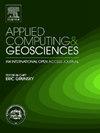基于递归神经网络的数据驱动动态摩擦模型
IF 3.2
Q2 COMPUTER SCIENCE, INTERDISCIPLINARY APPLICATIONS
引用次数: 0
摘要
在这个简洁的贡献中,证明了基于门控循环单元(GRU)架构的递归神经网络(RNNs)具有从合成数据中学习复杂动态速率和状态摩擦(RSF)定律的能力。用于训练网络的数据是通过将传统的RSF方程与状态演化的老化律或滑移律相结合来生成的。这种方法的一个新颖方面是通过自动微分明确地说明直接影响的损失函数的公式。研究发现,基于gru的rnn有效地学习预测速度跳跃(目标数据中有或没有噪声)导致的摩擦系数变化,从而展示了机器学习模型在捕获和模拟摩擦过程物理方面的潜力。讨论了当前的限制和挑战。本文章由计算机程序翻译,如有差异,请以英文原文为准。
Data-driven dynamic friction models based on Recurrent Neural Networks
In this concise contribution, it is demonstrated that Recurrent Neural Networks (RNNs) based on Gated Recurrent Unit (GRU) architecture, possess the capability to learn the complex dynamics of rate-and-state friction (RSF) laws from synthetic data. The data employed for training the network is generated through the application of traditional RSF equations coupled with either the aging law or the slip law for state evolution. A novel aspect of this approach is the formulation of a loss function that explicitly accounts for the direct effect by means of automatic differentiation. It is found that the GRU-based RNNs effectively learns to predict changes in the friction coefficient resulting from velocity jumps (with and without noise in the target data), thereby showcasing the potential of machine learning models in capturing and simulating the physics of frictional processes. Current limitations and challenges are discussed.
求助全文
通过发布文献求助,成功后即可免费获取论文全文。
去求助
来源期刊

Applied Computing and Geosciences
Computer Science-General Computer Science
CiteScore
5.50
自引率
0.00%
发文量
23
审稿时长
5 weeks
 求助内容:
求助内容: 应助结果提醒方式:
应助结果提醒方式:


